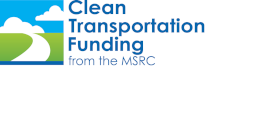 ohn Longville's career in government services has spanned more than 30 years, and he counts his seven years with the MSRC as one of the highlights. As one of the founding members of the MSRC, John reflects on the Committee's origin, its creativity, and how influential the MSRC has been in helping clean up the air in the South Coast District over the last 20 years.
ohn Longville's career in government services has spanned more than 30 years, and he counts his seven years with the MSRC as one of the highlights. As one of the founding members of the MSRC, John reflects on the Committee's origin, its creativity, and how influential the MSRC has been in helping clean up the air in the South Coast District over the last 20 years.
"I regard my time with the MSRC as some of the most significant work I've done and the least known," Longville said. He points to the conversion of most of the transit buses in the South Coast from diesel to natural gas as a prime example of this. "Virtually all of the transit buses today run on natural gas, yet most do not know that this is because of the MSRC. The MSRC helped fund buses for nearly every bus system in Southern California. We helped take a lot of the PM out of the air because of this one program alone," Longville proudly stated.
He first got involved with the creation of the MSRC through Kip Lipper, who was then Assembly Member Byron Sher's staff member working on AB 2766, the law that created the MSRC. Lipper, who now serves as environmental advisor to Senate President Pro Tem Darrell Steinberg, helped convene a group of local elected officials, transportation advocates and air pollution agencies to iron out how the funding created by the bill would be distributed. Longville was invited to sit on this committee as a representative of the Southern California Association of Governments (SCAG), where he was a member of the Board serving as Mayor of the City of Rialto.
"We hammered out the concept of a three-way split in funding between the AQMD, county transportation commissions and local governments on a per capita basis," Longville noted. This funding allocation is still in place today, with the MSRC receiving 30 percent of the $4 surcharge on vehicle license fees to fund projects that reduce air pollution from mobile sources.
Once AB 2766 was signed into law, Longville became one of the founding members of the MSRC. In 1993, he was elected Chair and continuously served as Chair until 1998, when he was elected to the California Assembly.
Longville looked back at the very beginning of the MSRC as an exciting time. "It was all a matter of compromise. People were more interested in solving problems than in holding their positions on a particular issue. We all wanted to work on what we could do to reduce the air pollution that are kids were breathing," he explained.
The support they received from staff was particularly important during the early days. "We had a tremendous staff from the agencies represented on the committee. They put in a lot of time and effort that was well beyond their job description," Longville said. Plus, the Committee was relatively obscure back then. "Almost nobody knew about the MSRC, and maybe this was some of the reason we were able to do things and reach compromises without outside pressure."
Longville reflected on some of the first projects MSRC helped fund - some were more traditional like the transit bus conversions, while others were more creative. One such project was for the San Bernardino County Sherriff's Department. The Department was spending a lot of time and money transporting prisoners from jail to the court house, moving from one end of the valley to the other, which was contributing to the county's air pollution problems. So, the MSRC created a work program category to develop a pilot program for video arraignments, where prisoners remain at the jail and judges would hold arraignments via video monitors. "Today, this is the norm for a large number of arraignments in San Bernardino County, but back then this was cutting-edge." Longville explained.
He also pointed to the subsidy that the MSRC provided for electric vehicles, and how EVs are starting to catch on again. "When the documentary Who Killed the Electric Car? came out, it focused on the death of the electric car, but didn't talk about who gave birth to it - it was midwived by the MSRC," Longville said. "In fact, a GM executive told me that one of the factors in making the decision to move forward with their retail effort for the EV1 was the MSRC's decision to provide a subsidy. The MSRC's funding helped establish the viability of the electric vehicle as more than just a novelty."
As for the biggest accomplishment during his tenure, Longville had a difficult time singling one out. "This is a tough choice, but I would have to say the project with the greatest impact was converting the massive number of diesel buses to CNG. These conversions were the ideal use of funds for which the MSRC was created."
After his time on the MSRC, Longville represented the 62nd District in the Assembly from 1998 until he was termed out in 2004. He now serves on the San Bernardino Valley Water Conservation District, where he was first appointed in 2007, and on the Board of Trustees for the San Bernardino Community College District, where he was elected in 2008.
"Aside from being a founding Board member of what is now Metrolink, being a part of the MSRC was the biggest role I played in government," Longville said. "As one of its founders and Chair for five years, the MSRC just had a massive impact on Southern California that most people don't know about - but, I do and that makes me happy."
